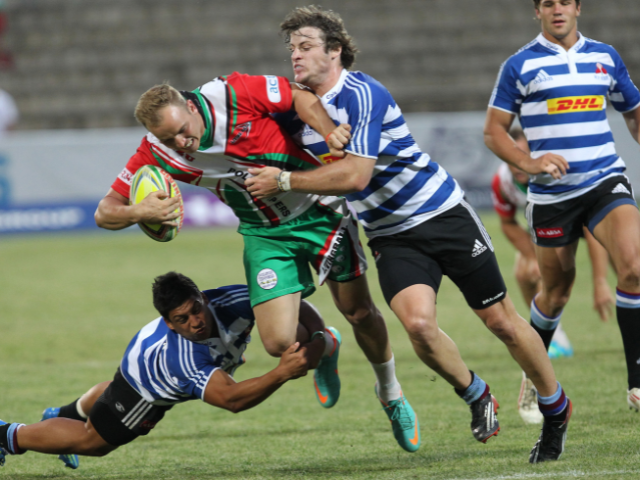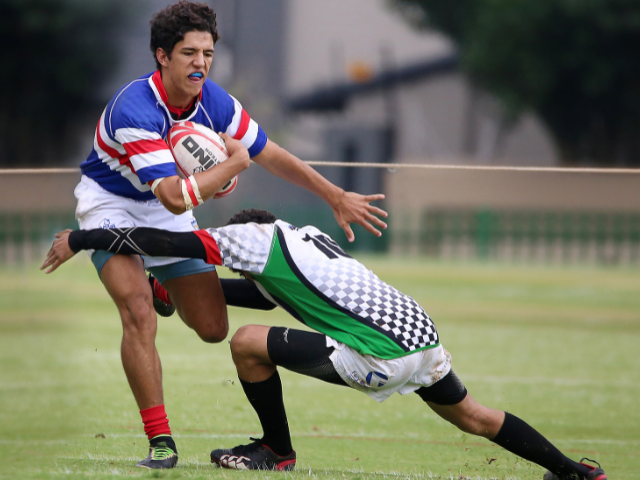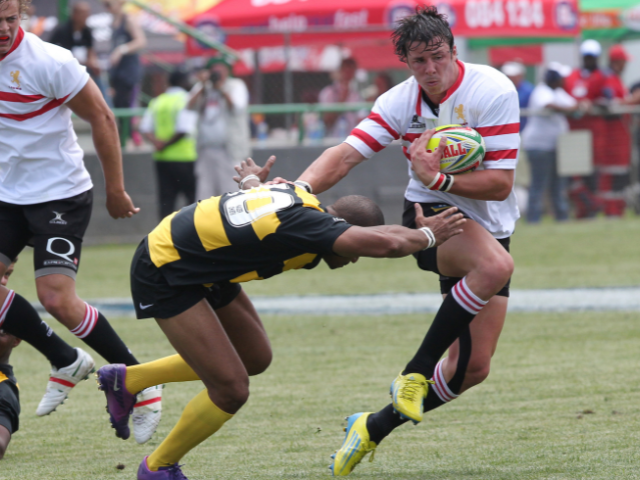Head Taping in Rugby is important as this type of sport is quite aggressive and physical, whereby safety is taken as high precedence.
One of the safety measures you may observe on the pitch is head taping.
Head taping protects rugby players during matches, which is an easy and simple yet effective way.
In this blog, I will discuss head taping, why it is done, and how it will help players stay safe while performing their best in the field.
What is Head Taping in Rugby?
Head taping refers to the encircling of athletic tape around a player’s head, often to protect the ears or to hold a head guard in place.
The tape serves as a cushion between the player’s head and any impact from tackles or scrums.
Head taping is very frequent in rugby, a highly contact sport. It also limits the occurrence of lacerations or abrasions during the game.
Why Do Rugby Players Head Tape?

There are several reasons why rugby players decide to tape their heads. Some of the most common ones include:
Head Taping
Another common type of rugby headgear is head taping, mainly used to protect the ears from injuries during scrums, rucks, and tackles.
The ears may rub or squash during close-contact collisions of players, leading to painful conditions like cauliflower ears.
Head taping cushions the ears to avoid such an injury.
Holding the Headgear in Place
Players sometimes wear head guards, and padded helmets, to protect the head from impact.
These are kept in place through taping throughout the game.
Rugby is a fast and aggressive contact sport, so the tape ensures that the ball doesn’t slip off the head.
Prevention of Cuts and Scratches
Taping of the head will also prevent minor cuts and scratches players may get during a match.
The tape protects the skin from any harsh contact with other players or the ground.
How Does Head Taping Help?

Headtaping in rugby is very practical. It offers a layer of protection, as most of the matches involve hard hits.
Although it may seem insignificant, it saves players from some of the most common rugby injuries.
Let’s break down the main advantages:
Cauliflower Ears Prevention
The main reason players tape up their heads is to prevent cauliflower ears.
These occur when the ear is severely struck or rubbed in a manner that the cartilage may be damaged.
Over time, the ear may swell and become irregularly shaped. Head taping protects the various degrees of friction and impact sustained by the ears during contact.
Keeping Headgear Secure
Taping keeps headgear secure in such cases when players use headguards.
Rugby is a highly mobile sport, and the last thing any player would want is some shifting or falling off of headgear.
The tape around these headguards keeps the headguards snug and secured.
Even when a player is not wearing headgear, the tape can provide some extra support to the head and ears.
This is because it feels like there’s some cushion protecting sensitive areas, such as the ears, during scrums and tackles.
Types of Tape Used for Head Taping
Taping of the head is generally done by rugby players with athletic tape or cohesives.
Both are designed to be sticky to the skin while providing the required support and protection without discomfort.
Athletic Tape
The most conventional type of tape that would be used in rugby would have to be an athletic tape.
It is firm, durable, and thus capable of holding firmly onto the ears or headgear that happens to be on your head.
This makes snapping and wrapping very easy and, therefore very popular with rugby players.
Cohesive Tape
Cohesive tape is elastic and clings to itself, except on the skin.
Since that is so, cohesive tape suits people who want protection but do not want their skin squeezed.
Cohesive tape holds together when the players require something light and even elastic.
Taping Your Head for Rugby

Taping for rugby may sound simple, but doing it to ensure the tape stays on and serves its purpose is an art.
Following is a generic procedure almost any rugby player follows while taping his head:
- Start Behind the Head: Start by setting the tape behind your head. This provides a good anchor point and keeps the tape in place.
- Around the Ears: Now tape around the head across the tops of the ears. Do not circle too tightly because this might cause discomfort.
- Overlap the Tape: Every time you wrap the tape, slightly overlap it to create a thick, even layer. This will also stop the tape from slipping off or shifting during the game.
- Secure the Tape: After every few wraps of the head, overlap the tape and cut it to press the end firmly so that it doesn’t budge or move.
How NOT to tape your head – Common Mistakes
While taping a head sounds quite simple, players make several common mistakes. Here’s what to avoid:
- Not Taping Too Tightly: One should not tape too tightly. Too tight a tape can cut circulation or make the game much more uncomfortable than it has to be. It should feel snug, not restrictive to movement.
- Using the Wrong Tape: Not all tapes are recommended for head taping. One must use the appropriate athletic or cohesive tape for sports purposes. Other types of tapes may not stick properly or even irritate.
- Cover too much or too little: A balance should be maintained while taping. Much of the head cannot be taped because this would lead to discomfort for the wearer, whereas too little might not serve the purpose for which it is applied. Emphasis should be given to the ears and other areas susceptible to scrapes.
Other Ways of Protecting Your Head in Rugby
Head taping in rugby works quite effectively, but not all players depend on this method for protection.
This is why many players use other headgear, like head guards or scrum caps.
These padded helmets reduce the rate of head injuries, concussions included, and ears as well.
- Headguards: These are padded helmets that cover the top of the head and ears. They are designed to reduce the effects of tackles and collisions. Many players tape up their heads to keep the head guards in place.
- Scrum Caps: As the name says, these caps are head guards, but for scrums. They keep the ears and head safe when going into close-contact play. Like head guards, they can also be taped on at the side to keep them in place throughout the game.
Conclusion
Head taping in rugby may seem minor, but on the field, it is crucially important for players’ safety.
Head taping provides protection for the ears, holds headgear on, and provides support, all of which show it’s a vital part of rugby safety.
If you found this blog helpful, check out our other informative posts for more insights on rugby safety, techniques, and gear. Explore other topics like Rugby Player Cauliflower Ear and The Role of Scrum Caps in Rugby, and stay informed on how to protect yourself on the field while maximizing your performance.